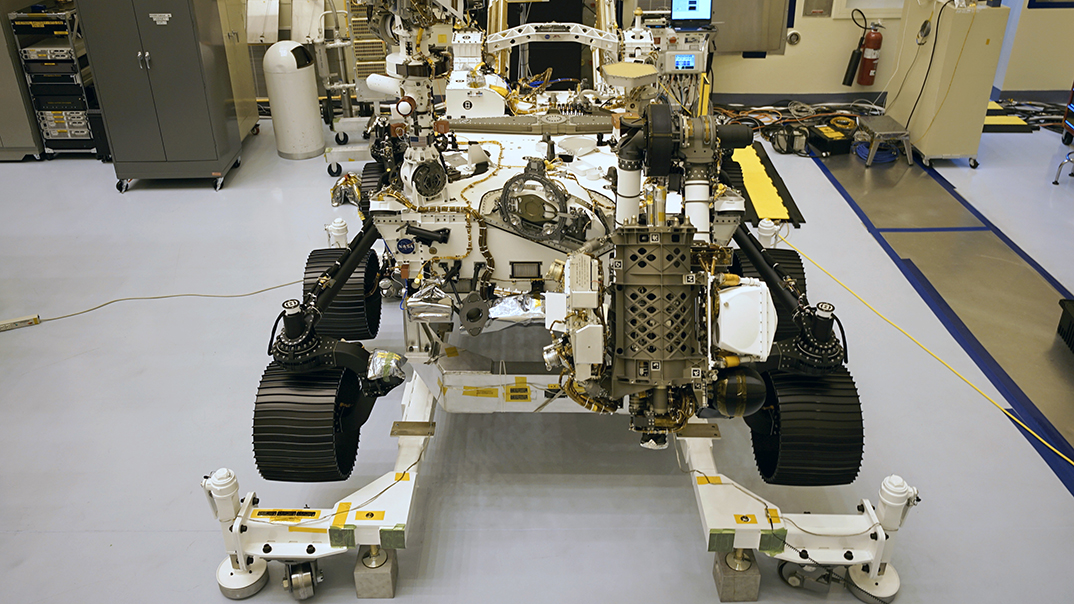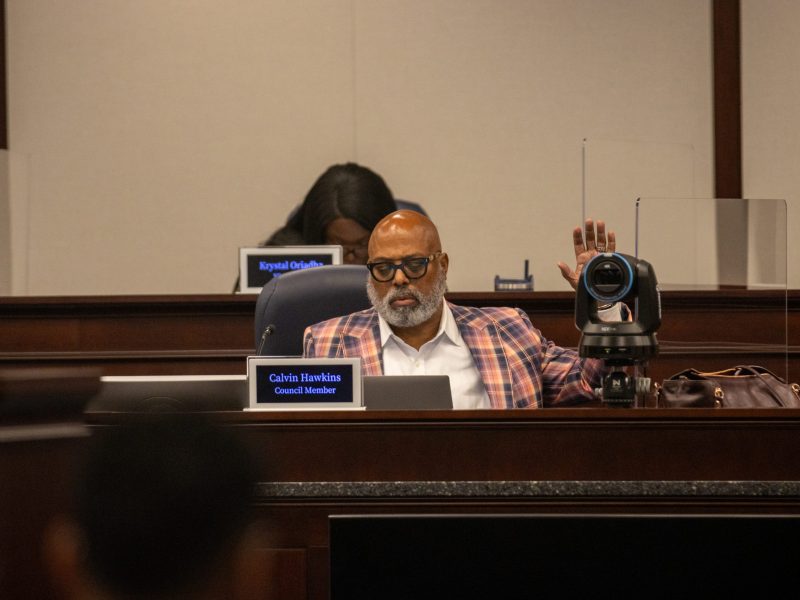By Vincent Petroni
For The Diamondback
Although Perseverance landed on Mars two weeks ago, the rover’s advancements are still generating excitement among professors and students at the University of Maryland who may benefit from the mission’s findings.
Perseverance, which is currently seeking signs of ancient life on Mars, will be the first mission to collect controlled samples from the planet’s surface that could be brought back to Earth.
Perserverance’s landing site at an ancient lake called Jezero Crater differs from past NASA landing sites due to its dangerous terrain. To traverse the terrain, Perseverance has new Terrain-Relative Navigation technology that helped avoid hazards during its landing.
“I’m just really excited to see what crazy stuff is happening at Mars at the Jezero Crater site that we never … could have anticipated,” said Dr. Nicholas Schmerr, a professor in this university’s geology department.
Schmerr said scientists already have access to samples from Mars that are “in the form of meteorites,” which have gone through weathering.
[UMD environmental organizations encourage sustainability via webinars and new website]
But the samples Perseverance gathers will be brought back directly from Mars on a spacecraft, meaning they won’t be altered in any way when they return, said Dr. Melissa Hayes-Gehrke, an astronomy lecturer at this university.
“It’s really great to see that we are continuing to study Mars,” Hayes-Gehrke said. “Basically every time we send something, it’s improved technology and a more focused goal.”
The samples gathered by Perseverance will be brought back to Earth in a future mission, but in the meantime, students at this university can already use Perseverance to enhance their academic experience.
Because Perseverance data is public once acquired, students can get involved in the mission by reaching out to professors about doing research projects related to the data from the rover, Schmerr said.
“It’s definitely something that it can get people excited about astronomy or planetary science, geology, and maybe make more students want to go into those fields,” Hayes-Gehrke said.
Hayes-Gehrke added that Perseverance data can also relate to studies in exoplanets — planets outside of our solar system — which many students at this university are currently researching.
D. Teal is an astronomy graduate student at this university who studies exoplanet atmospheres.
[Freshmen develop new app to replace GroupMe for UMD students]
Teal said studying geology on exoplanets is complex because although there are telescopes to study these planets, there is no way to directly observe their geology.
Through Perseverance’s mission and the ability to collect direct samples, Teal said, scientists will be able to “narrow down” what instruments and experiments are necessary to find evidence of life.
“Worst-case scenario, we don’t find life,” Teal said. “But still, it’s really exciting that we now know what instruments to use and how to start really looking for this in the context of Perseverance.”
The Perseverance rover is the most sophisticated rover sent to Mars, equipped with 23 cameras, two microphones, an X-ray device, an instrument for radar imaging and two new experiments in technology: MOXIE and Ingenuity.
The Mars Oxygen In-Situ Resource Utilization Experiment, or MOXIE, is an experiment that will produce oxygen from the Mars atmosphere. If it works correctly, it will be able to create oxygen to use for rocket propellant and breathing.
Ingenuity, the first Mars helicopter, came attached to Perseverance. This helicopter doesn’t have a current mission. Its purpose is to test flight on Mars, which is difficult due to Mars’ thin atmosphere.
Teal said because Mars has intense winds and weather events, testing if flying is achievable is important. Teal credits the new advancements in technology for the ability to conduct these tests.
If Ingenuity’s flight around Mars is successful, Teal said the technology could be used for future missions. In the meantime, they remain impressed with the landing of Perseverance itself.
“It’s always exciting to be reminded that people can do awesome things,” they said.



